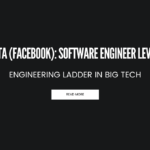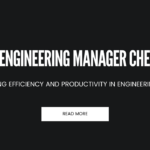Interview Question
Can you provide some examples of career development plans you have created with your team members? How did you approach creating them?
Role: Engineering Manager
Asked: Flexport, Wealthfront and 18 other companies
Base Answer Framework
When responding to an interview question about career development plans created with team members, it’s important to demonstrate your ability to support growth, recognize individual goals, and foster a culture of learning. Here’s how you might structure your response:
Introduction: Acknowledge the Importance
Begin by expressing your understanding of the importance of career development in employee motivation and retention.
Example: “I strongly believe that career development is a crucial aspect of team management. It not only motivates the team but also ensures that we have the right skills and competencies for future challenges.”
Outline Your Approach: Tailored Plans
Discuss how you approach career development on an individual basis, understanding that each team member might have different aspirations and needs.
Example: “In my approach, I make sure that each career development plan is tailored to the individual’s goals, strengths, and areas for improvement.”
Specific Example 1: Skill Enhancement
Describe a scenario where you helped a team member develop specific skills or competencies.
Example: “For instance, I worked with a team member who was excellent in technical skills but wanted to develop leadership qualities. We created a plan that involved mentoring opportunities, leadership workshops, and gradual involvement in project management.”
Specific Example 2: Role Transition
Provide an example where you assisted someone in transitioning to a different role or preparing for a promotion.
Example: “In another case, one of my team members showed a keen interest in data analysis, although her role was primarily in content creation. We developed a plan where she could take online courses in data analytics and gradually take on small analysis projects. This eventually led to her transition to a data analyst role within the company.”
Feedback and Adjustment
Explain how you ensure that these plans are effective and make adjustments based on feedback.
Example: “I regularly check in with my team members to gather feedback on their progress and make any necessary adjustments to their development plans. This ensures that the plan remains aligned with their evolving goals and the needs of the organization.”
Conclusion: Results and Impact
Conclude by summarizing the positive impacts these development plans had on the individuals and the team as a whole.
Example: “Through these personalized career development plans, I’ve seen significant improvements in team morale, skill levels, and overall productivity. It’s gratifying to see team members achieve their goals and grow within the organization.”
By providing specific examples and demonstrating a thoughtful, individualized approach, you’ll effectively convey your commitment to career development and your capability as a leader who fosters growth and progression within your team.
Example Answer
Yes, I’ve had the opportunity to develop career development plans with my team members in several instances. One notable experience was during my tenure as a Project Manager at XYZ Corp. My team consisted of eight diverse individuals, each with unique skills and aspirations.
- Introduction: Valuing Individual Growth
- I’ve always placed a high value on individual growth within a team context. In this case, I saw immense potential in each team member for further development and career progression.
- Approach: Personalized Discussions
- My initial step involved one-on-one conversations with each team member. These discussions were centered around their professional goals, areas for improvement, and any specific roles they aspired to in the future.
- Example 1: Enhancing Leadership Skills
- For instance, one team member, John, expressed a desire to take on more leadership responsibilities. We crafted a plan that included mentorship from a senior leader, participation in a leadership training program, and leading a small project team. This plan was aligned with his goal of moving into a managerial role.
- Example 2: Technical Skill Advancement
- Another team member, Lisa, aimed to deepen her technical expertise in software development. We identified key skills she needed to develop and enrolled her in specialized training courses. She was also given the opportunity to work on more technically challenging aspects of our projects.
- Feedback Mechanism: Adaptive Plans
- It was crucial to ensure the plans were working effectively. Regular feedback sessions were scheduled, allowing for adjustments in the plans as needed. This dynamic approach helped in keeping the plans relevant and effective.
- Conclusion: Measurable Impact
- These personalized career development plans led to significant positive outcomes. John successfully transitioned into a leadership role within the year, and Lisa’s enhanced skills contributed to the team’s ability to tackle more complex projects. Overall, there was a notable increase in team engagement and skill levels.
In conclusion, my approach in creating career development plans is to focus on individual aspirations while aligning them with organizational goals. This has proven effective in motivating team members and driving professional growth within the teams I’ve managed.


